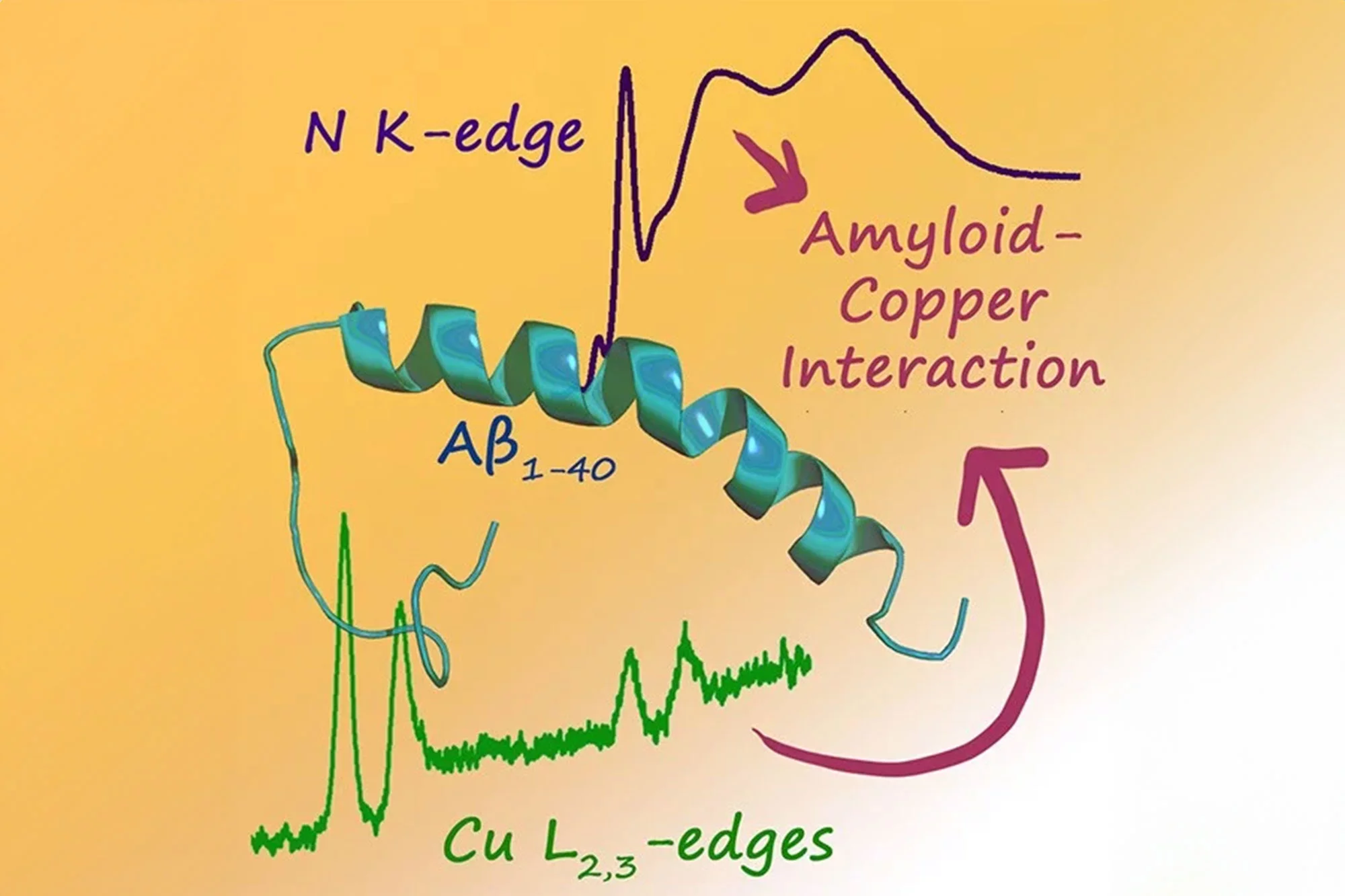The amyloid-beta peptides and metal ions like copper and zinc play an important role in Alzheimer’s disease. In this context the understanding of how these peptides reacts with traces of metal ions is of enormous current interest. In an interdisciplinary project, researchers from the Laboratory of Nanoscale Biology in BIO and the Laboratory for Condensed Matter in PSD have revealed the reaction between the nitrogen atoms of the amyloid-beta peptide and copper/zinc ions by using soft X-ray absorption spectroscopy.
Upon binding to the peptide, a fingerprint of Cu(I) has been directly observed by Copper L2,3 edge spectroscopy and further confirmed by X-ray magnetic circular dichroism at the X-Treme beam line of the Swiss Light Source. The reduction of copper ions can catalyze the formation of toxic reactive oxygen species (ROS), which may cause damage to the surrounding brain tissue. In addition, aggregation or pH decrease leads to a smaller signature of Cu(I), indicative of insoluble aggregates formation and lower ROS production. This fingerprint of Cu(I) from Copper L2,3 edge spectroscopy can be further explored as a biomarker of cerebrospinal fluid (CSF) for the diagnosis of Alzheimer’s disease.
Importantly, using soft X-ray absorption spectroscopy and X-ray magnetic circular dichroism available at the X-Treme beam line at the Swiss Light Source, the copper and nitrogen spectroscopic signatures can be investigated simultaneously on the same sample under the exactly same conditions. This is not possible using other lab-based techniques or using hard X-ray spectroscopy.
Contact
Dr. Jinghui Luo
Laboratory of Nanoscale Biology
Paul Scherrer Institut
Forschungsstrasse 111, 5232 Villigen PSI, Switzerland
Telephone: +41 56 310 4764
E-mail: jinghui.luo@psi.ch
Dr. Jan Dreiser
PSI, Photon Science Division
Forschungsstrasse 111, 5232 Villigen PSI, Switzerland
Telephone: +41 56 310 5895
E-mail: jan.dreiser@psi.ch
Original Publication
Amyloid-beta–copper interaction studied by simultaneous nitrogen K and copper L2,3-edge soft X-ray absorption spectroscopy
Jinghui Luo, HongzhiWang, Jinming Wu, Vladyslav Romankov, Niéli Daffé, and JanDreiser
iScience 24, 12 (2021) 103465
DOI: 10.1016/j.isci.2021.103465


